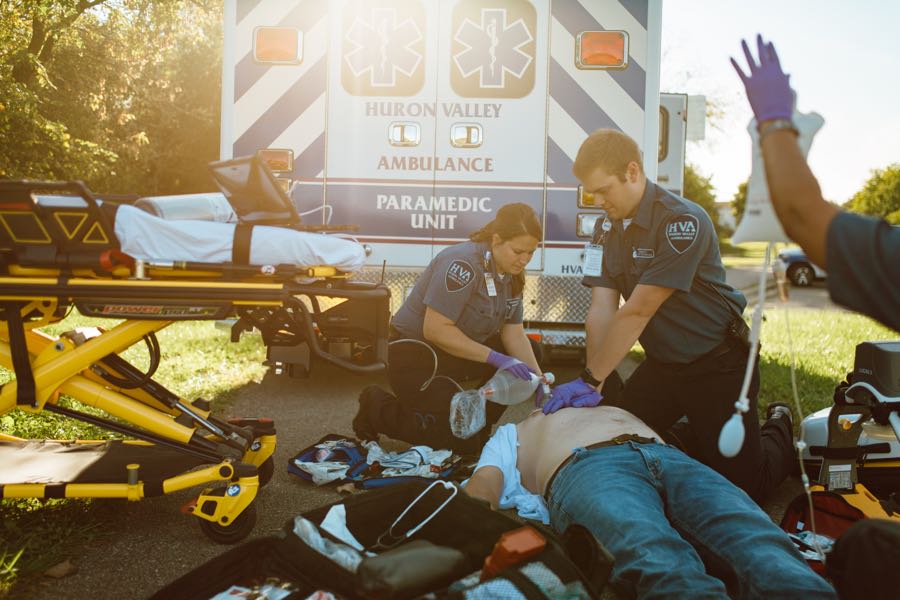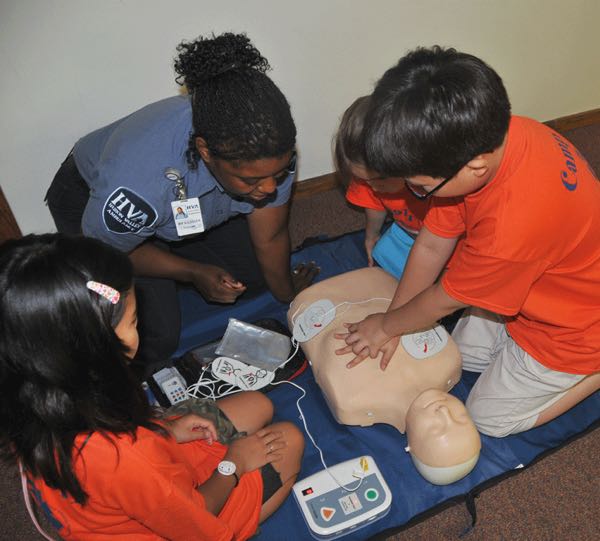CPR and first aid Training

We offer free and paid CPR and First Aid training
Free Hands-Only CPR and basic first aid training are available to schools, workplaces, organizations, churches, clubs, and businesses – anywhere people gather! We want to help you create a team of people ready to respond to life’s emergencies. We can also help Scout Troops earn first aid badges. Free classes do not offer certification cards.
Contact us to set up a free Hands-Only CPR or First Aid training.
Nicole Balensiefer, EMT
communityevents@emergenthealth.org
734-477-6218
We also offer traditional AHA CPR and First Aid certification courses at scheduled times. Certification courses come with a fee. See our course schedule to learn more.
Hands-Only CPR FAQ
- How to recognize cardiac arrest
- The difference between cardiac arrest and a heart attack
- How to know if you’re performing proper chest compressions
- How to use an AED
- Why your organization should have an AED on-site
- Important information to communicate to 9-1-1 dispatchers
Anyone capable of performing proper chest compressions – usually about 100 to 120/min and to a depth of at least 2 inches. The AHA states that children as young as sixth grade are capable of accurately performing CPR.
Hands-Only CPR is a valuable life-saving tool, but does not currently come with a certification card. It is also much less time-intensive to teach than traditional CPR classes. Certification CPR courses are paid events to cover the cost of obtaining the certification card from the AHA and the time it takes the trainer to teach the course.
